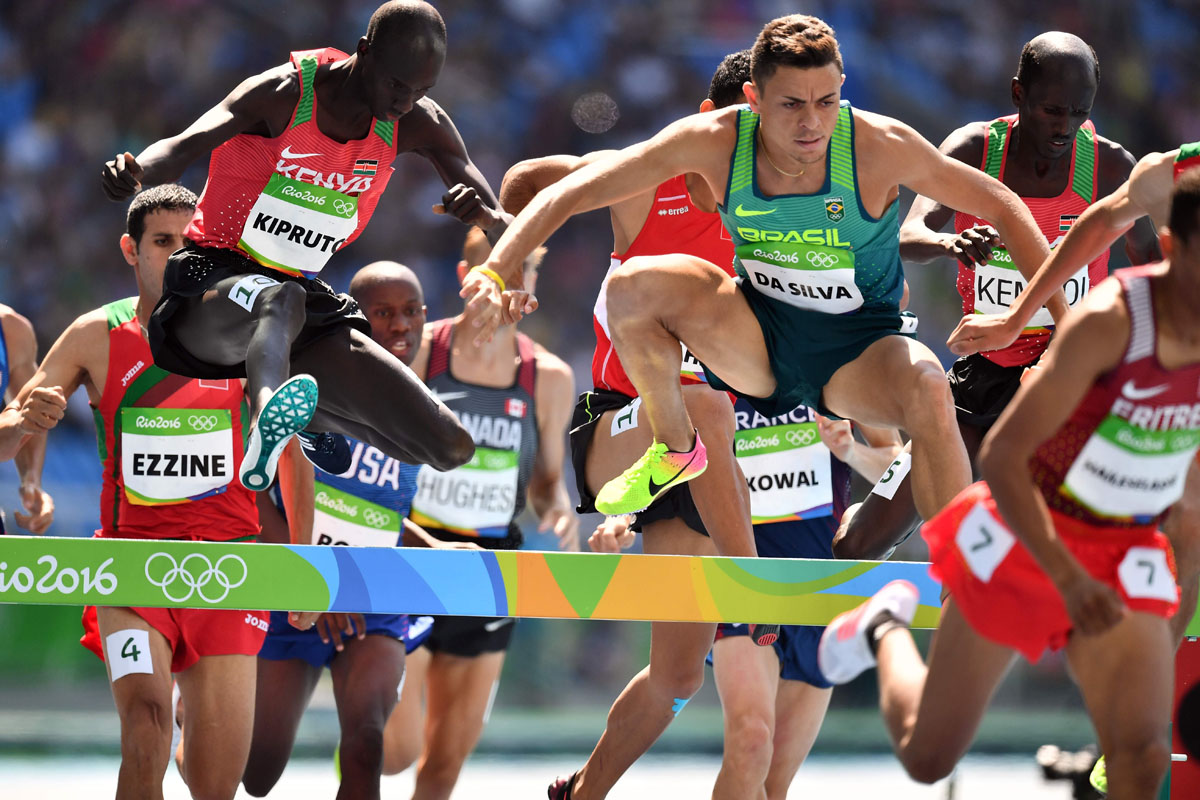Steeplechase History and Evolution: Steeplechase Final Olympics

The steeplechase, a unique and challenging athletic event, has a rich history that spans centuries. From its humble beginnings as a cross-country race with obstacles to its modern-day form in the Olympics, the steeplechase has undergone significant evolution, reflecting the changing landscape of athletic competition and the ingenuity of athletes and organizers.
Origins and Early Development
The origins of the steeplechase can be traced back to 18th-century England, where hunting enthusiasts would race across the countryside, jumping over obstacles such as fences, ditches, and streams. These races were often held on courses that included church steeples, hence the name “steeplechase.” The first recorded steeplechase race took place in 1752, when a group of English gentlemen raced from a pub in London to a church steeple in nearby Croydon.
Early Races and Evolution, Steeplechase final olympics
In the 19th century, steeplechase racing became more formalized, with standardized courses and rules. The first official steeplechase race was held in 1830 at the Cheltenham Racecourse in England. These early races were typically run over distances of three to four miles, with obstacles including fences, ditches, and water jumps.
The Steeplechase in the Olympics
The steeplechase was first included in the Olympic Games in 1900, at the Paris Games. The event was initially run over a distance of 2,500 meters, with obstacles consisting of fences, ditches, and water jumps. The event has undergone several changes in distance and obstacles over the years, including:
- The distance was increased to 3,000 meters in 1908.
- The number and type of obstacles were standardized in the 1920s.
- The water jump was introduced in 1920.
- The current distance of 3,000 meters with 28 obstacles (including 7 water jumps) was established in 1956.
Key Athletes and Events
The steeplechase has been a popular event in the Olympics, with many legendary athletes achieving success. Some of the most notable athletes in steeplechase history include:
- Vladimir Kuts (Soviet Union): Kuts won the 3,000-meter steeplechase at the 1956 Melbourne Olympics, setting a new world record of 8:39.0.
- Kenisis Bekele (Ethiopia): Bekele is considered one of the greatest steeplechase runners of all time. He won the Olympic gold medal in 2008 and 2012, and holds the world record of 7:53.63.
- Ruth Jebet (Bahrain): Jebet became the first woman to break the 9-minute barrier in the steeplechase, setting a new world record of 8:59.84 in 2016.
Notable Steeplechase Finalists in the Olympics

The Olympic steeplechase has witnessed a plethora of remarkable athletes who have left an indelible mark on the event’s history. These individuals have pushed the boundaries of human endurance and showcased exceptional skill and determination.
Impact of Training Methods and Strategies on Steeplechase Performance
The training methods and strategies employed by steeplechase athletes have evolved significantly over time, contributing to the event’s progression and the athletes’ remarkable performances.
- Strength and Conditioning: Athletes focus on building a strong core, powerful legs, and explosive strength to navigate the barriers and maintain pace throughout the race. This involves incorporating weightlifting, plyometrics, and other strength-building exercises into their training regimen.
- Speed and Agility: The steeplechase demands agility and speed, particularly when clearing the barriers. Athletes train to develop these qualities through drills and exercises that simulate the race conditions.
- Endurance and Pace Management: The steeplechase is a grueling event that requires exceptional endurance. Athletes train to develop aerobic capacity and the ability to maintain a consistent pace over long distances.
- Technical Proficiency: The steeplechase requires technical proficiency in clearing the barriers. Athletes dedicate time to mastering the technique, focusing on efficient and effective approaches and takeoffs.
Mental and Physical Preparation for Olympic-Level Steeplechase Competition
Olympic-level steeplechase competition demands a holistic approach to mental and physical preparation. Athletes must possess unwavering focus, mental resilience, and a strategic mindset to perform at their best under intense pressure.
- Physical Conditioning: Athletes engage in rigorous training programs that focus on building endurance, strength, speed, and agility. They carefully monitor their nutrition, hydration, and recovery to ensure optimal physical performance.
- Mental Toughness: Steeplechase athletes require exceptional mental fortitude to withstand the physical and psychological challenges of the race. They train their minds to remain focused, motivated, and resilient in the face of adversity.
- Race Strategy: Athletes develop a strategic approach to the race, considering factors such as pacing, barrier clearance, and the competition. They plan their race tactics to maximize their chances of success.
- Visualization and Mental Rehearsal: Athletes use visualization and mental rehearsal techniques to prepare for the race mentally. They envision themselves successfully navigating the course and overcoming challenges, enhancing their confidence and performance.
Steeplechase final olympics – The steeplechase final at the Olympics is a spectacle of grit and endurance, a test of both physical and mental strength. Imagine the athletes, legs burning, hearts pounding, as they navigate the daunting water jumps and hurdles, their focus unwavering.
Perhaps you’re watching from the comfort of your home office, perched on a brown leather office chair from eBay , a classic piece that adds a touch of elegance to your workspace. As you watch the final stretch, the roar of the crowd echoing through your room, you can’t help but feel a surge of adrenaline, mirroring the athletes’ own drive to cross the finish line.
The steeplechase final at the Olympics is a spectacle of raw athleticism and grit. Imagine the runners, their faces etched with determination, as they navigate the water jumps and hurdles. After the race, they might find solace in the comfort of a brown leather lift chair , reliving the adrenaline rush and the sheer joy of competing on the world’s biggest stage.
The steeplechase final is a testament to human endurance, a moment etched in the annals of sporting history.